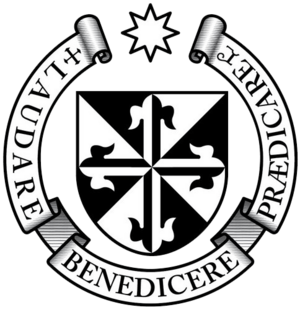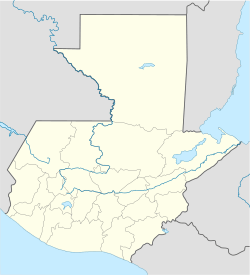Cunén facts for kids
Quick facts for kids
Santa María Cunén
Cunén
|
|
|---|---|
|
Municipality of Guatemala
|
|
| Country | |
| Department | |
| Municipality | Cunén |
| Government | |
| • Type | Municipal |
| Area | |
| • Municipality of Guatemala | 195 km2 (75 sq mi) |
| Elevation | 1,827 m (5,994 ft) |
| Population
(Census 2018)
|
|
| • Municipality of Guatemala | 41,455 |
| • Density | 212.6/km2 (550.6/sq mi) |
| • Urban | 7,903 |
| • Ethnicities | K'iche' Ladino |
| • Religions | Roman Catholicism Evangelicalism Maya |
| Climate | Cwb |
Santa María Cunén, often called Cunén, is a town and a local government area (municipality) in the El Quiché region of Guatemala. It covers about 195 square kilometers. The town is high up, about 1,827 meters above sea level, which gives it a mild climate. Cunén is about 68 kilometers from Santa Cruz del Quiché, the main city of the region. Visitors can enjoy places like Las Grutas (caves) and the beautiful El Chorro waterfall.
Contents
History of Cunén
Early Settlements by Friars

After the Spanish arrived, they wanted to teach the native people about the Catholic faith. New towns were created by missionaries, often called "Indian doctrines" or "reductions." These friars were supposed to teach Spanish and Catholicism.
The original plan was for these towns to become regular parishes later, like those in Spain. However, this didn't happen. The friars had special rights to convert natives, so they mostly answered to their own religious leaders, not the Spanish government.
Once a doctrine was set up, the friars often protected their own interests. These towns became permanent native communities that stayed the same throughout the Spanish colonial period.
The friars chose where to build these doctrines. They were free to set up communities as long as the main goal was to eventually make them into regular parishes. In reality, these doctrines grew and were never handed over.
They formed around the friars' monastery. From there, friars would visit smaller settlements nearby, called "annexes" or "visit towns."
So, these doctrines had three main features:
- They were independent from outside control (both church and government).
- A group of friars managed them.
- They had many smaller towns connected to them.
Having a group of friars in charge helped the community system continue smoothly, even if one friar passed away.
In 1638, the Order of Preachers divided their large doctrines. These divisions helped them manage their economic benefits. Cunén was part of the Sacapulas monastery's area.
| Monastery | Doctrines |
|---|---|
| Sacapulas |
|
Changes After Independence
After Central America became independent in 1821, a civil war began. This war was between conservatives, who wanted to keep the old ways and religious orders, and liberals, who wanted to remove them.
In 1829, the liberal general Francisco Morazán won. The conservative government was removed, and many religious groups were asked to leave Central America. This greatly affected Cunén because the Order of Preachers had to leave.
In 1836, the liberal government of Mariano Gálvez made Cunén part of the Sololá district.
When conservatives regained power in 1840, some religious orders returned to Guatemala. However, they couldn't get back all their old properties. They were expelled again after the Liberal Revolution of 1871.
In 1872, the Quiché Department was created. Cunén officially became a municipality (a self-governing town) on August 12, 1872, by a special order.
Years later, on April 24, 1931, General Jorge Ubico declared Cunén a special "Pre-Columbian National Monument." This recognized its historical importance from before the arrival of Columbus.
Cunén During the Civil War
During the Guatemalan Civil War, Cunén was in an area where a guerrilla group was active. This group sometimes damaged public and private buildings. They said this was to affect the government and military.
In a report about the war, former members of the group explained their actions. They said that damaging things like bridges was done to stop the army from moving around. For example, from late 1981 to early 1982, a highway was closed, and communication lines were cut.
Sometimes, when power was cut to army bases, nearby towns also lost electricity. This caused problems for the local people.
Here are some events that affected Cunén during this time:
| Date | Target | Result |
|---|---|---|
| November 16, 1981 | Power facilities in Santa Cruz del Quiché | Nearby towns lost electricity. |
| December 18, 1981 | «El Tesoro» Bridge in Quiché Department | The bridge was destroyed, limiting army access. |
| December 21, 1981 | Cunén's town hall and telegraph office | Buildings were set on fire, destroying civil records. |
| January 19, 1982 | Power facilities in Santa Cruz del Quiché | Nearby towns lost electricity again. |
| January 27, 1982 | Bridges to San Miguel Uspantán, Nebaj, and Chajul in Quiché Department | Both bridges were destroyed, cutting off army access. |
To respond to the guerrilla activities, the government began military operations in areas like Cunén. These operations sometimes led to difficult times for communities. Many reports describe how people suffered during this period.
Sometimes, these events happened on important community days or during large military actions. Airplanes would bomb certain areas. After such events, many people had to leave their homes. They would go into the mountains, seek safety in Mexico, or move to other towns.
The K'iche' Maya people who sought refuge in the mountains were sometimes seen as part of the guerrilla by the army. This led to strict military controls and ongoing attacks, making it very hard for them to get food or medical help. Many people died from hunger.
In Cunén specifically, there were reports of difficult events in the town itself in January 1981, and in the Chimanzana village in January 1982.
Climate in Cunén
Cunén has a subtropical highland climate. This type of climate is often described as Cwb in the Köppen climate classification system. It means the area has mild temperatures and distinct wet and dry seasons.
| Climate data for Cunén | |||||||||||||
|---|---|---|---|---|---|---|---|---|---|---|---|---|---|
| Month | Jan | Feb | Mar | Apr | May | Jun | Jul | Aug | Sep | Oct | Nov | Dec | Year |
| Mean daily maximum °C (°F) | 16.7 (62.1) |
17.2 (63.0) |
18.8 (65.8) |
19.4 (66.9) |
18.4 (65.1) |
17.7 (63.9) |
17.2 (63.0) |
17.7 (63.9) |
17.4 (63.3) |
16.4 (61.5) |
16.9 (62.4) |
17.0 (62.6) |
17.6 (63.6) |
| Daily mean °C (°F) | 10.4 (50.7) |
10.6 (51.1) |
12.0 (53.6) |
12.9 (55.2) |
13.0 (55.4) |
13.1 (55.6) |
12.6 (54.7) |
12.5 (54.5) |
12.7 (54.9) |
11.9 (53.4) |
11.3 (52.3) |
11.1 (52.0) |
12.0 (53.6) |
| Mean daily minimum °C (°F) | 4.2 (39.6) |
4.1 (39.4) |
5.3 (41.5) |
6.4 (43.5) |
7.7 (45.9) |
8.5 (47.3) |
8.0 (46.4) |
7.3 (45.1) |
8.0 (46.4) |
7.4 (45.3) |
5.8 (42.4) |
5.3 (41.5) |
6.5 (43.7) |
| Average precipitation mm (inches) | 31 (1.2) |
21 (0.8) |
26 (1.0) |
65 (2.6) |
142 (5.6) |
258 (10.2) |
185 (7.3) |
198 (7.8) |
244 (9.6) |
173 (6.8) |
68 (2.7) |
26 (1.0) |
1,437 (56.6) |
| Source: Climate-Data.org | |||||||||||||
Where is Cunén Located?
Cunén is surrounded by other towns and municipalities within the El Quiché region.
 |
Nebaj | San Juan Cotzal |  |
|
| Uspantán | ||||
| Sacapulas | San Andrés Sajcabajá |
See also
 In Spanish: Cunén para niños
In Spanish: Cunén para niños


